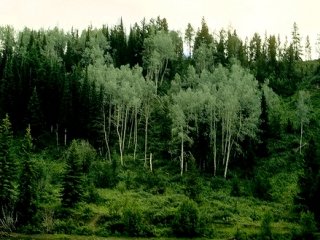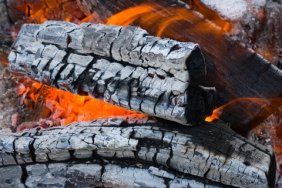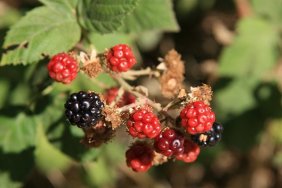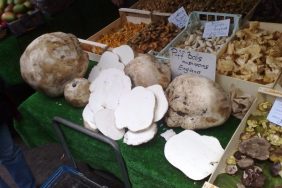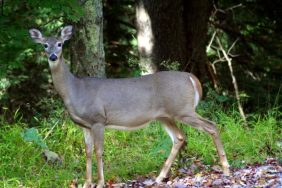 I’ve always been a sort of sponge for information about the natural world. Many of my indoor memories as a young child involve the weekly PBS schedule of Wild America, Nature and Nova. If I wasn’t outside with my dad enjoying nature, I was inside learning about it.
I’ve always been a sort of sponge for information about the natural world. Many of my indoor memories as a young child involve the weekly PBS schedule of Wild America, Nature and Nova. If I wasn’t outside with my dad enjoying nature, I was inside learning about it.
As an adult, this desire has far from subsided. If anything, I’m even more engaged and involved in learning everything I can about my environment. When I was a kid, it was of course the lions, tigers and bears that caught my attention. Now, I am more interested in those often overlooked yet equally fascinating components of our world. Plants.
Recently, I’ve been dorking out on trees. Not only identifying them reliably in the field, but understanding how they can be useful for outdoors-man.
For instance, did you know that the bright red berries of the Sitka mountain-ash tree actually ferment in mid-winter yielding a 140 proof snack for browsing animals and birds? Just a month or two ago an elk in Norway got drunk on some similarly top-shelf berries and had to be rescued from a tree. Become an expert at identifying this backwoods sylvan speakeasy and you can leave your flask at home.
There are hundreds of other dendrological tidbits that can be useful or maybe just interesting to the outdoors-man as well. Here are a few for your quiver:
- Blue Tip and Diamond matches are made from the wood of the quaking aspen, the bark of which is also an effective analgesic.
- Paper birch limbs have no flavor. They’re the main wood used for tongue depressors, and can be great for skewering meat if you want to avoid imparting a flavor.
- Yellow birch twigs have a wintergreen mint flavor and can be a fun chew on a long pack in to the stand.
- Red alder is a go-to for browsing deer, elk and moose especially in winter when resources are scarce. Look to these trees first for signs of local activity.
- Acorns from oaks of the subgenus Quercus, known as the white oaks are largely flavorless to sweet. As a general rule, you can tell a white oak apart from the red oak subgenus (Lobatae) by the rounded lobes on the leaves. Additionally, the inner shell of the acorn will be smooth, not fuzzy.
- Acorns from the red oaks are usually bitter, and have a fuzzy lining on the inside of the acorn shell. Their leaves are generally pointed at the lobes. If you plan on eating red oak acorns, make sure to give them a good soak first to draw out the bitterness.
- Sassafras is highly aromatic and parts of the tree can be used for tea.
- When fishing a stream bank in the west, look for overhanging black willow and avoid Russian olive trees. The Russian olive is highly pest resistant and is not likely to harbor insects, while the black willow will likely harbor a wide range of insects that occasionally drop into the water and into the mouths of waiting trout.
- The seeds of the Kentucky coffee tree (largest leaves in North America) are poisonous unless cooked, but once roasted they make a great true-coffee substitute.
- If you’re planning on making your own duck decoys, keep an eye out for the American bass tree. It’s wood is light, uniformly grained and easy to carve. Also a good candidate for your first homemade duck call as well.
- Staghorn sumac is largely used as a spice in many cuisines, it has analgesic properties and an earthy and slightly citrus flavor. It can be found throughout the country as an ornamental, but naturally east of the Mississippi. Be warned, this one is in the same family as poison ivy, so avoid the sap in the leaves and stalks if you’re susceptible.
- Hedge (osage-orange) and mulberry are incredibly decay resistant. Use this wood for building your stand and you’ll never have to buy treated lumber. The branches make long-lasting tent stakes, and the wood of hedge was the go-to for traditional bow making.
- When choosing boughs for bedding, find a limber pine. Their needles and branches are very soft and flexible. This one is easy to identify, if you can tie the branches in a knot without them breaking, it’s a limber pine.
- If in the American Southwest, look for pinyon trees. The seeds inside the cones are known commonly as pine nuts, and are especially delicious when roasted.
- Never pick a spruce for a Christmas tree. You’ll be vacuuming your tree off the carpet in less than a week. Instead, look for a red-pine which will hold it’s color and needles well. To identify, look for needles in two’s that are about 4-6” long. The needles will break cleanly when bent, they’re not very flexible. The cones will be under 3” long and will not have any sort of spine or “armature” on the seeds.
